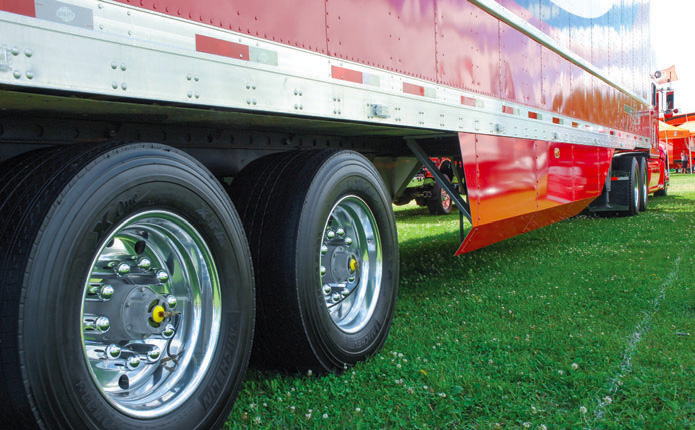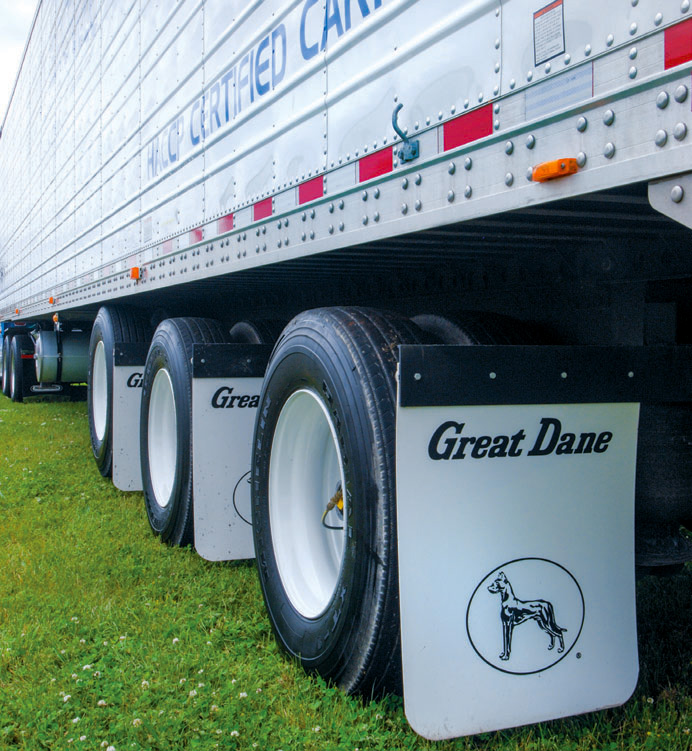
High U.S. exchange rates coupled with stratospheric demand are keeping trailers on the leased side of the ledger.
An article posted in Today’s Trucking, June issue:
BY JIM PARK
The day my ship came in I was at the airport. How many times have you heard that one from a trucker? When it comes to the acquisition and procurement of trailers, a look back over the past seven or eight years tells a similar story.
Today’s trailer market, especially dry van and refrigerated trailers, is as tight as it has been in recent memory. During the last half of 2014, many fleets came to the conclusion the recovery from the 2008 recession had finally taken hold and the economy was moving forward with some certainty. Consequently, they started getting serious about ordering trailers; not just to replace aging equipment, but new stuff with which to grab a share of the burgeoning demand for freight service.
By the end of the year and on into the first quarter of 2015, trailer builders’ order boards jammed up. Now nearly every build slot is taken for the near term, which basically means for the remainder of this year. It’s a good time to be in the dry van or reefer business. It’s not such a good time to be in the market for new equipment.
Across the country, the supply of and demand for trailers varies, as do market conditions. We are a nation of regions,
after all.
“Ontario and Quebec are more reliant on the retail sectors and are very strong in the dry van market,” says Mississauga, Ont.-based Anne McKee, executive vice president of Trailer Wizards. “Once you get into Atlantic Canada you deal a lot more in reefers, especially now as the fish-
ery and vegetable seasons start to heat up.
“As you know the price of oil has taken a bit of a dive, so in the prairie region where we had very strong demand for decks and specialty equipment—especially in the northern part of the prairie region—we are seeing a real slow down,” she says. “Other parts of the prairie region are strong right now because of agriculture. The British Columbia market is very strong, I mean the port situation is always
the wild card in the mix, but it remains strong as well.”
While overall demand for equipment remains on the strong side, the weakening dollar has crimped our appetite for buying. So much so that many fleets are now turning to leasing to mitigate the effects of the exchange rate.
“Our dollar is low compared to the American dollar, and that is impacting trailer purchases,” McKee points out. “Also, the large fleets in the U.S. have taken up almost all of the dry van build spaces right out to January [2016]. Almost every manufacturer is booked until at least September or October for reefer builds. That combined with the dollar issue makes for an expensive trailer and that means more people are turning to renting and leasing.”
Lease vs Purchase
Canadian dealers and their customers had it good for a while when the two currencies were at or close to par. But the fly in the ointment then was the credit crisis. The only customers the banks would touch were those that were already flush. Anyone considered even the slightest risk was pretty well out of luck. Credit crisis notwithstanding, the economy was in the tank then and fleets were only buying to replace aging equipment. There was much new gear coming into circulation.
Now that the economy is firing on all cylinders, we have the exchange rate to contend with again. The 20% premium can add $5,000 or more to the price of a trailer.
“A reefer trailer that used to cost $60K is now $65K or $70K Canadian so there is a bit of a difference,” says Joe Ricci, director of origination, Maxium Financial Services. “Business isn’t really suffering because of it, it’s only another $100 a month or so on a five-year deal.”
Still, the differential can put additional load on the cash flow. Leasing can work for customers seeking to hang on to their cash for other purposes. The tax load on a purchase is high at the beginning, whereas with a lease, the tax payments are spread out over the term of the lease. And leasing is a nice way to go when you’re worried about the maintenance side of things.
“The technician shortage is impacting fleets all over the country,” says McKee. “A full maintenance lease is a good option for fleets that don’t have their own shop facilities or can’t find good technicians. There are a number of reasons for going to full service, but I would say at least 95% of our customers are doing it that way.”
That’s another way to stabilize costs and cash flow. The full-service lease cost will be higher, but it’s also predictable. McKee says it’s in her company’s best interest to keep the equipment well maintained so that it retains its value for resale at the end of the lease.
Leasing is also a great way to get over humps in the business model, like during surges in volume, or when a customer makes a specific request you can’t easily accommodate. This isn’t often an issue in vans and reefers, but when you get into speciality equipment like tank trailers it’s a different story.
Because of their high capital cost, you don’t flip tank trailers around like vans. Often the trailer is customized to the commodity. So, companies like Transcourt Tank Leasing can fill the gap on a short term basis, making available equipment that might take months to order or providing equipment on a short term basis to help manage peak periods.
“Some fleets prefer to lease out right, it just depends on the business model,” says Transcourt’s co-founder and president, Bruce Daccord. “Leasing helps keep the costs stable and they still make money on the spread between the payment and the revenue as opposed to treating the equipment as an asset.”
On the purchase side companies like Bibby Financial Services can tailor loans for smaller customers who have the revenue but might be struggling with cash flow. Mary Ann Hudson, executive vice president of Bibby Financial, says the company specializes in customizing the loans to suit the customer’s situation.
“Terms could be anywhere from 90 days to 6 months,” she says. “We work out all kinds of exceptions based on their cash flow. Of course we don’t ever want to put them in a situation where they can’t pay it back in a reasonable amount of time, but we also want them to pay it off where it doesn’t hurt their cash flow.”
While it’s great to have financial alternatives for equipment procurement, it would be nice to have some equipment to procure. Analysts say it will take most of 2015 to get the order backlogs behind us. Even with the current strength of the economy, fleets won’t continue investing in additional capacity of it means once again flooding the market. They have now tasted the fruits of a tight freight market, and many would be happier if it stayed that way. It seems today money is easier to get than equipment.


Recent Comments